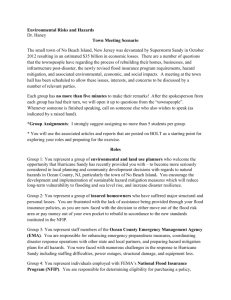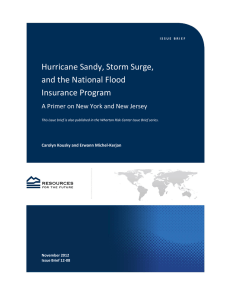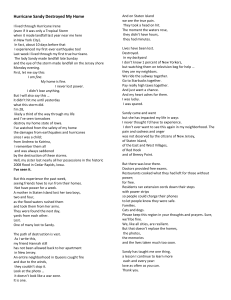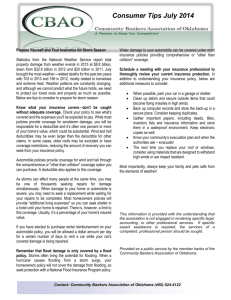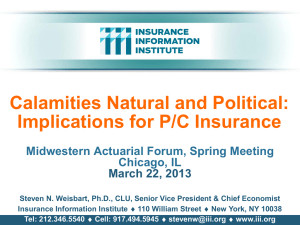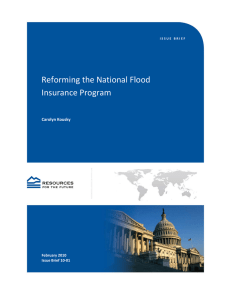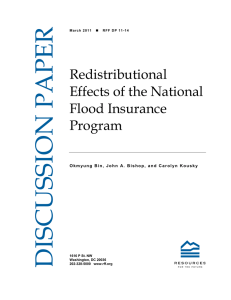Hurricane Sandy and the National Flood Insurance Program Infographic
advertisement
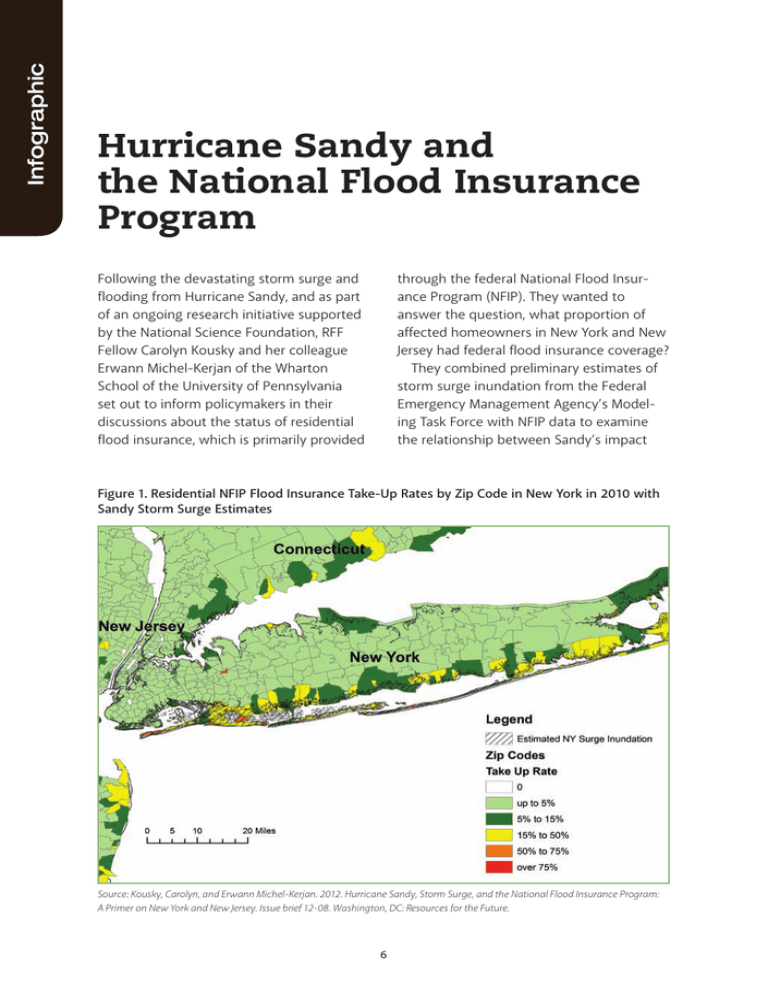
Infographic Hurricane Sandy and the National Flood Insurance Program through the federal National Flood Insurance Program (NFIP). They wanted to answer the question, what proportion of affected homeowners in New York and New Jersey had federal flood insurance coverage? They combined preliminary estimates of storm surge inundation from the Federal Emergency Management Agency’s Modeling Task Force with NFIP data to examine the relationship between Sandy’s impact Following the devastating storm surge and flooding from Hurricane Sandy, and as part of an ongoing research initiative supported by the National Science Foundation, RFF Fellow Carolyn Kousky and her colleague Erwann Michel-Kerjan of the Wharton School of the University of Pennsylvania set out to inform policymakers in their discussions about the status of residential flood insurance, which is primarily provided Figure 1. Residential NFIP Flood Insurance Take-Up Rates by Zip Code in New York in 2010 with Sandy Storm Surge Estimates Source: Kousky, Carolyn, and Erwann Michel-Kerjan. 2012. Hurricane Sandy, Storm Surge, and the National Flood Insurance Program: A Primer on New York and New Jersey. Issue brief 12-08. Washington, DC: Resources for the Future. 6 Figure 2. Residential NFIP Flood Insurance Take-Up Rates by Zip Code in New Jersey in 2010 with Sandy Storm Surge Estimates Source: Kousky, Carolyn, and Erwann Michel-Kerjan. 2012. Hurricane Sandy, Storm Surge, and the National Flood Insurance Program: A Primer on New York and New Jersey. Issue brief 12-08. Washington, DC: Resources for the Future. 7 Infographic don't realize their homeowners insurance policy does not cover floods, and others face budget constraints. Kousky and Michel-Kerjan note that having adequate insurance coverage not only helps prevent financial hardship for individuals when a disaster strikes, but also provides social benefits in terms of greater availability of funds for rebuilding communities and reducing reliance on limited federal aid post-disaster. and NFIP “take-up rates”—the percentage of households with an NFIP policy (Figures 1 and 2). Their analysis shows that many homeowners who sustained flood damage from Sandy did not have flood insurance policies. Researchers have identified many reasons for low take-up rates: homeowners dismiss the risk, are overly optimistic in thinking they won’t be victims of a disaster, or drop insurance if they don't file a claim within a short period of time. Some homeowners

